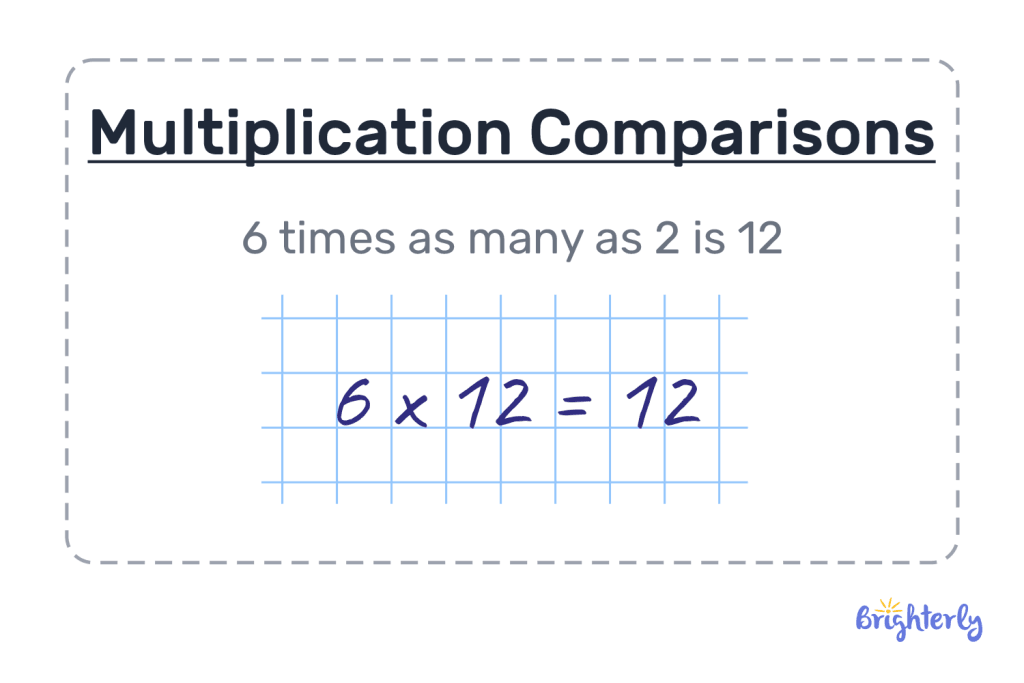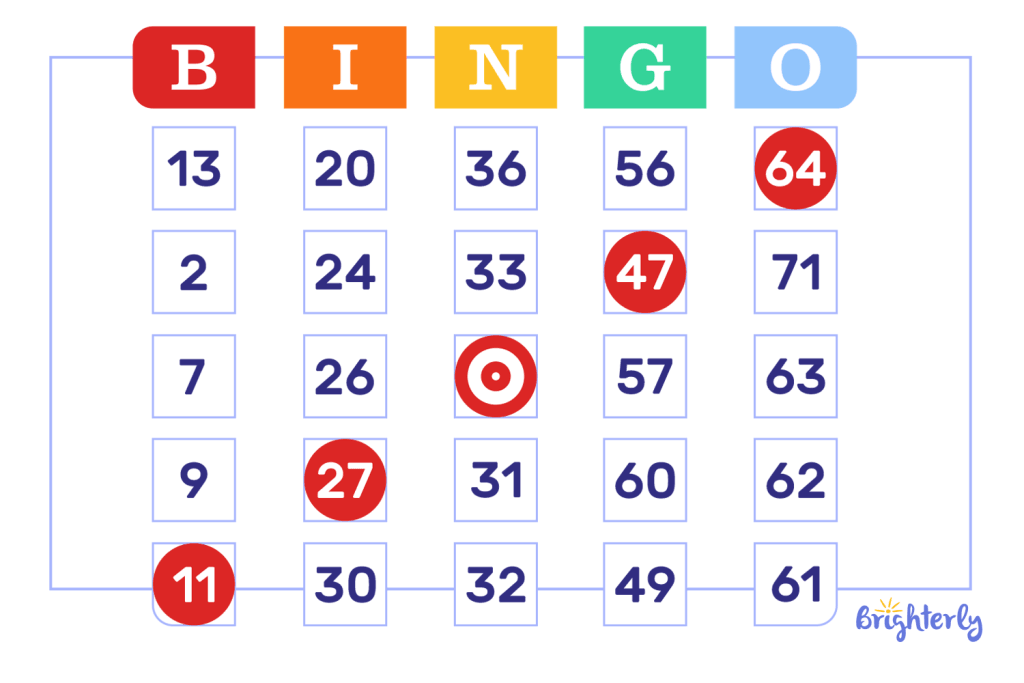Multiplicative Comparison – Definition with Examples
Updated on November 3, 2025
At Brighterly, our mission is to not only equip you with knowledge on mathematical concepts, but also methods of working with numbers.
Today we’ll explore multiplicative comparison, which helps us compare quantities. We’ll cover its definition, real-life applications, and some fun games. We’ll also share practice problems so you can test yourself!
What is multiplicative comparison?
Multiplicative comparison is a method of comparing two quantities by understanding how many times larger or smaller one is than the other — the multiplicative relationship.
E.g., if we have 3 and 12, multiplicative comparison shows us that 12 is 4x bigger than 3, because you multiply 3 x 4 to get 12.

Multiplicative comparison in real life
- Distances: Your home is twice as close to the park as it is to school
- Baking: You need 5x as much flour as you do sugar in a recipe
- Shopping: A named brand is 3x more expensive than a supermarket brand
These activities all use multiplication as a comparison.
Multiplicative comparison vs additive comparison
Additive comparison is another way of comparing quantities. It compares the difference between two numbers — for example, the difference between 10 and 15 is 5. You can work this out by subtracting the smaller number from the larger.
Multiplicative comparison in advanced mathematics
Multiplicative comparison is useful in elementary school, and in more advanced math concepts like ratios. E.g., 18 is 3x larger than 6, and we can represent this with the ratio 18:6, simplified as 3:1.
You can also use it in algebra when working with variables. In 5x + 9, you know that 5x is 5 times the value of x.
Fun math games for multiplicative comparison
Games are a great way to learn math — they’re so fun, they don’t feel like learning!
- Multiplicative comparison bingo: Use bingo cards, but instead of calling out the numbers, call out their multiplicative comparisons – i.e. for 33, say “3 times larger than 11”
- Multiplicative comparison card game: Hand out 2 cards to players, and get them to multiply the numbers. Whoever has the largest multiplicative comparison wins

Math tools for multiplicative comparison
- Times tables: Multiplicative comparison uses the times tables because you need to work out multiples of your smaller number
- Number lines: This classic math tool visualizes multiplicative comparison. You can see, for example, that 4 is twice as far away from 0 as 2 is
Multiplicative comparison examples and practice problems
Now, let’s look at examples of multiplication comparisons and try out multiplicative comparison problems. The example will help you understand how to solve the problem, so you can put yourself to the test!
Multiplicative comparison example
Example: Lauren has 6 pieces of candy. James has 4x as many pieces of candy as Sarah. How many pieces of candy does James have?
Answer
| 32 pieces of candy. |
John has 4 x 8 pieces, which equals 32 pieces of candy.
Practice problem 1
Jess has 7 books in her bookcase. Ross has 3x as many books in his bookcase. How many books does Ross have?
Practice problem 2
Interpret the multiplication equation as a comparison: 9 x 4 = 28.
Conclusion
Now you know everything there is to know about multiplicative comparison, you can apply it both in math class and your everyday life! You’ll also be able to tackle algebra and ratios much more easily.
Multiplicative comparison: Frequently asked questions
What is a multiplicative comparison?
Multiplicative comparison is about comparing two quantities and seeing how much larger or smaller one is than the other. For example, 25 is 5 times larger than 5.
What is the difference between multiplicative comparison and additive comparison?
Multiplicative comparison compares quantities based on how much larger or smaller one is than the other. Additive comparison compares the difference between two quantities.
Why is understanding multiplicative comparison important?
Understanding multiplicative comparison is important because it can help you compare numbers easily, improve your multiplication as comparison skills and give you foundational skills for topics like ratios and algebra.
Can multiplicative comparison be used in everyday life?
Yes, you can use multiplicative comparison in everyday life. You can compare the prices of groceries, distances or baking or cooking ingredient quantities, for example.
How can I get better at multiplicative comparison?
You can get better at multiplicative comparison by using games and worksheets to practice using it. Multiplicative comparison bingo and practice math problems allow you to work with it in different ways.






